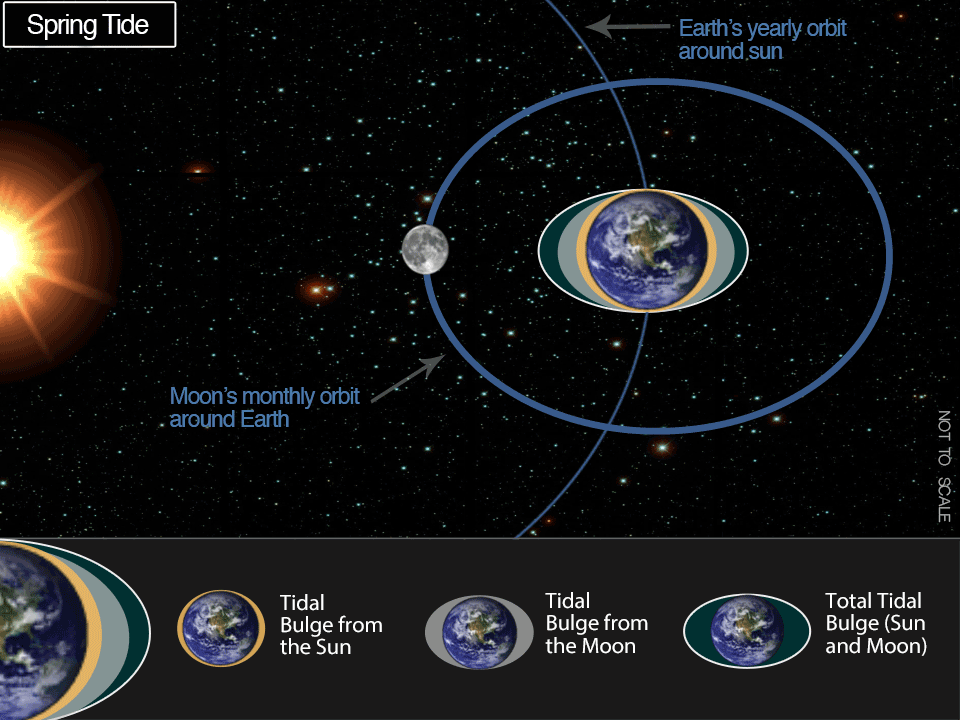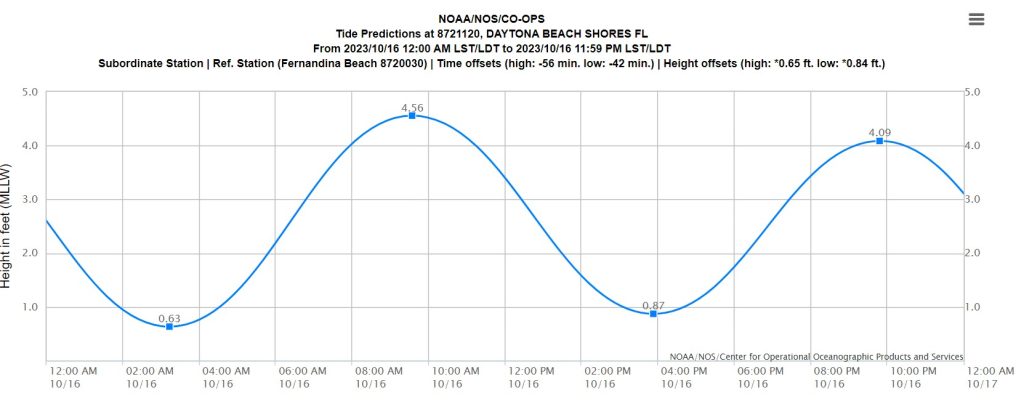Welcome to the second blog of the Florida 101 series. If you haven’t read it yet, go back and check out our first entry on Florida weather.
Understanding tides is vital to being able to appreciate life on the coast! Tides affect how high the water will come up at your favorite beach and may affect wave and surf conditions. If you visit an inlet or the intracoastal, incoming or outgoing tides may cause strong currents. The change in water level can also affect the water depth, meaning some areas may be impassable or unsafe to pass in a vessel at low tide. Keep reading to get an introduction to what causes the tides and what variation you can see throughout the day and year. Then be sure to find your local tide charts and check them before planning your water-based activities!
What causes tides?
Tides are caused by the gravitational pull of the moon, and less so of the sun. The alignment of the moon and sun affects how large the tidal range is. When the moon and sun are in alignment, we see a new moon or full moon and have what is called a spring tide. Spring rides have a larger tidal range, so there will be a higher high tide, and a lower low tide. When the moon and sun are out of alignment with one another, we have a quarter moon and a neap tide, which has a smaller tidal range.

King tides
You may hear about “king tides,” which just means bigger tides than usual. These extra high tides are often caused by the relative position of the earth and moon, which our orbits are closest to one another. However, here in Florida, king tides are also affected by seasonal wind patterns. As a result, on the east coast of Florida we typically have extra high tides in the fall. During these fall king tides, coastal areas may experience “sunny day” flooding.
Daily tidal patterns
Throughout most of Florida, we have a semi-diurnal tide pattern, meaning we have two high tides and two low tides in day. The tidal range at Flagler and Volusia beaches ranges from 3-5 feet, with an average of a 4-foot difference between low and high tide. While most of Florida follows the semi-diurnal tidal pattern, some areas in the Gulf of Mexico on have one high and one low tide each day. This is referred to as a diurnal tide.

The time of high tide and low tide changes each day by about 50 minutes. This is because the moon is rotating around us, and it takes about 50 minutes each day to line back up with where the moon has moved to in the past day!
How to check the tides
One great thing about tides is that they are predictable. There are many websites and phone applications available to check the tides. When you check the tides, be sure to look whether it is a beach or intracoastal station. Intracoastal stations will have a delay, as it will take more time for the water to enter the inlet and travel to that area. You may want to use these stations if you are planning a boating or fishing trip in the Intracoastal. If you are looking for tides to visit the beach, make sure that you choose a station that is located on the beach. The Daytona Beach Shores tide station will be applicable for beaches throughout Volusia and Flagler Counties. I know at first, I chose the “Flagler Beach” site before realizing that it was actually for Smith Creek in the Intracoastal and has very different tide times than the beach!
Below are the links to the NOAA tide predictions for several nearby in the Volusia and Flagler areas:
- Daytona Beach Shores (ocean tides)
- Smith Creek, Flagler Beach (Intercoastal Waterway)
- Bings Landing (Intracoastal Waterway)
Do you live in another area of Florida? No worries, you can visit the primary NOAA tides website to find the closest station to you in Florida or anywhere else in the US! Just be sure to check the site on a map and ensure you understand if it is located along the coast or the intracoastal waterway 😊
 5
5
